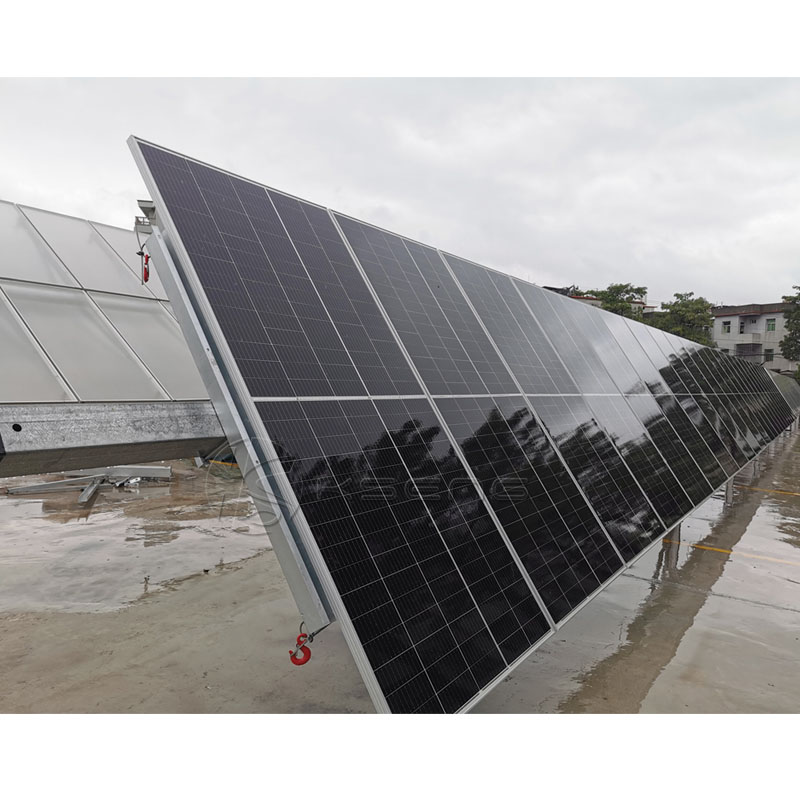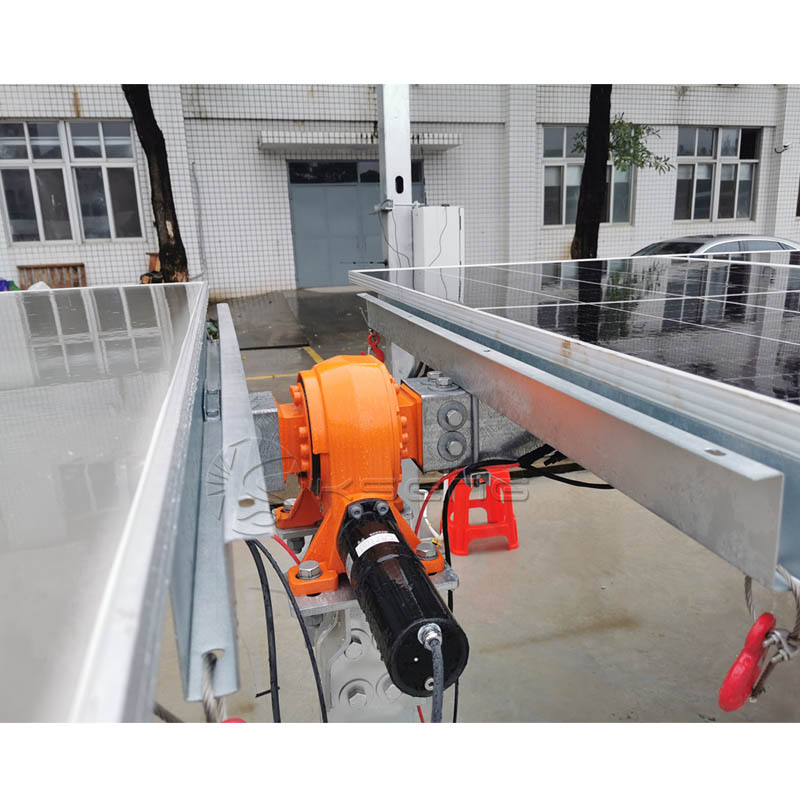
Solar trackers allow your solar panels to follow the sun’s path in the sky, just like a sunflower, so they can produce more solar power. But, solar tracking systems come with a high price tag.
Is the extra solar power output worth the additional cost of a solar tracker? In most cases, it makes more sense to just install more solar panels.
Below, we explain everything you need to know about solar trackers, from what types there are to whether or not they’re a worthwhile investment.

A solar tracker is a device that follows the sun as it moves across the sky. When solar trackers are coupled with solar panels, the panels can follow the path of the sun and produce more renewable energy for you to use.
Solar trackers are usually paired with ground mount solar systems but recently, rooftop-mounted trackers have come onto the market.
Typically, solar tracking equipment will be connected to the racking of the solar panels. From there, the solar panels will be able to move along with the movement of the sun.
The way a solar tracking system moves is dependent on the type of system it is. There are three types of sun tracking systems:
Manual trackers require someone to physically adjust the panels at different times throughout the day to follow the sun. This isn’t always practical, as you need someone to constantly monitor the sun and change the position of the solar panel system.
Passive trackers contain a liquid with a low boiling point that will evaporate when exposed to solar radiation. When the liquid evaporates, the tilt system becomes imbalanced. This imbalance causes the panels to tilt towards the direction of the sun’s rays.
Active trackers rely on motors or hydraulic cylinders to change position. The motors in active trackers will move the PV panels so they are facing the sun. While this is more convenient than manual trackers, the moving parts within the motors could easily break. This could lead to higher maintenance costs over the lifetime of the system.
From there, solar trackers can be categorized even further, based on which direction they move. A solar tracker can be either:
Single axis solar tracker
Dual axis solar tracker
Single axis trackers follow the position of the sun as it moves from east to west. These are usually used in utility-scale projects. A single axis tracker can increase production between 25% to 35%.
This tracker not only tracks the sun as it moves east to west, but also follows it as it moves from north to south. Two axis trackers are more common among residential and small commercial solar projects that have limited space, so they can produce enough power to meet their energy needs.
Tracking systems offer greater levels of energy output compared to fixed solar arrays because they can follow the sun’s movements.
The variety of trackers available from manufacturers like Allearth Solar and First Sunergy makes it possible to find a unit that’s just right for your needs.
Solar trackers are very beneficial in areas with Time of Use electricity rates. More energy will be able to be produced during peak hours, which means you won’t have to pay for grid energy when it’s most expensive.